Honors College
Colloquium 2020-21
Page Content
Required for all first-year HC students, this two-semester sequence lays the foundation
for your development as an Honors Scholar. Focused on a common theme, this class will
encourage you to think creatively, be curious and investigative, and ask rich and
complex questions.
In the belief that action and experience are a critical part of the learning process,
Honors Colloquium embraces the principles of “active learning.” While we sometimes
travel further afield, in light of COVID-19 and the uncertainties associated with
it, our 20-21 Colloquium faculty are looking to fulfill these active learning principles
through alternative approaches to travel, such as day trips or local/regional overnights
that might take place during both the fall and spring semesters. As always, costs
for transportation, accommodations, tickets, and some meals will be covered by the
Honors College. For planning and scheduling purposes, students will be informed well
in advance about required travel.
HON 111 (Fall)
In HON 111, you will learn how to encounter and interact with different kinds of writing and texts; how to become a better analytical reader; how to collaborate with your fellow scholars; how to engage in academic debate and discourse; and how to improve your communication skills, both written and oral.
HON 112 (Spring)
In HON 112, we will go from a focus on asking questions to a focus on answering them. While you continue to hone the skill of asking rich and rewarding questions, you will also begin developing the tools you need to find answers. In short, in HON 112 you will learn how to undertake “research,” broadly defined, what research looks like in various disciplines, the ethics of research, and how research develops organically.

Boundaries are everywhere in our lives—from the spaces we inhabit to the subjects we study, from how we are organized politically and economically to how we organize knowledge, from how we think of ourselves to how we think about others. Yet, the lines we draw are often less defined—perhaps even blurrier—than we might imagine. Across its various sections, Colloquium 20-21 will explore the ideas of boundaries: why we draw them, what happens as a result of them, the ways in which they empower or inhibit us, and what can happen in the places and spaces “in between.”
While each section of Colloquium will approach this topic differently and make use of different texts, all sections will begin the year with Elizabeth Day’s How to Fail: Everything I’ve Ever Learned from Things Going Wrong (2019).
Individual course descriptions follow.
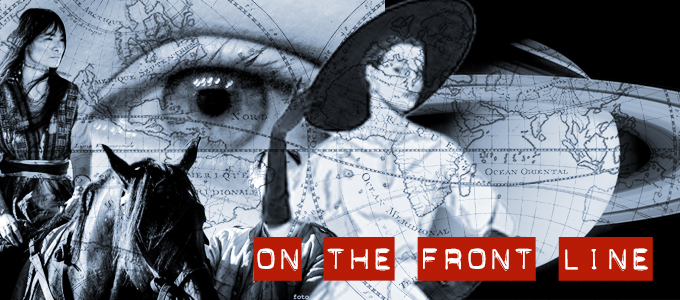 On the Front Line
On the Front Line
Marek Steedman
HON 111 H001 #3246 | MW 1:00 – 2:15
Some boundaries mark the front lines of our defenses against the outside world. They are where we hold things at bay, but also where we make necessary contact with others. In the fall semester we explore the surfaces through which we interact with our social and physical environment: the face; our skin; and that second skin of clothing, habit, and personality we use to mask ourselves from, and reveal ourselves to, others. In the spring semester we explore a variety of frontiers—the ambiguous borderlands between countries and regions, and the ‘final’ frontiers of science and exploration. We will boldly go in search of strange new worlds, and new ways of understanding our selves!
Readings include: Monty Lyman, The Remarkable Life of the Skin; Chris Abani, The Face: Cartography of the Void; Anne Cheng, Second Skin; J.M. Coetzee, Waiting for the Barbarians; Marcus du Sautoy, The Great Unknown.
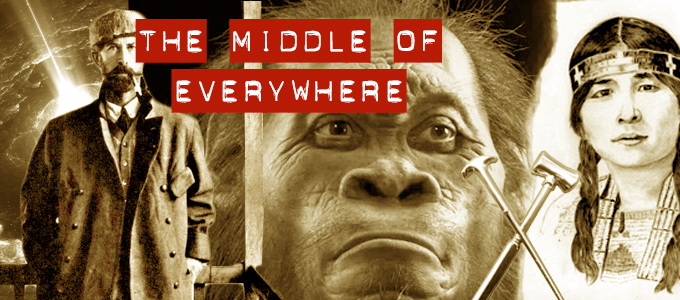 The Middle of Everywhere
The Middle of Everywhere
Don Yee
HON 111 H002 #3247 | MW 1:00 – 2:15
“We demand rigidly defined areas of doubt and uncertainty!”
― The Hitchhiker's Guide to the Galaxy, by Douglas Adams
We often think of our world in dichotomies -- black and white, alive or dead, right or wrong. Knowing where the edges are can give us feelings of stability and satisfaction. However, much of our world and Universe exists at places where these boundaries touch, reverberating to create new ideas and unexpected consequences. What if these places between boundaries are not where our understanding ends, but where it begins? This section will explore people, events, and ideas that lay at the intersection of what most people think of as hard borders, but where we'll learn that the edges that separate them may not even exist. In HON 111 we'll examine stories where our conceptions of human boundaries, like race and mental illness, were obliterated by new discovers and by challenging old ideas. In HON 112 we will explore situations where the boundaries between us and the Universe may lead to new possibilities for humanity.
Readings include: Lee Berger, Almost Human: The Astonishing Tale of Homo naledi and the Discovery That Changed Our Human Story; Gail Saltz, The Power of Different; Charles King, Gods of the Upper Air: How a Circle of Renegade Anthropologists Reinvented Race, Sex, and Gender in the Twentieth Century; David Grann, The Lost City of Z: A Tale of Deadly Obsession in the Amazon.
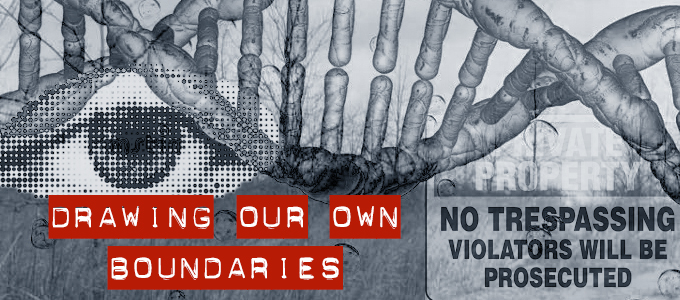 Drawing Our Own Boundaries
Drawing Our Own Boundaries
Joyce Inman
HON 111 H003 #3248 | MW 1:00 – 2:15
The things we have forgotten are housed.
Our soul is an abode and by remembering houses and rooms,
we learn to abide within ourselves.
—Gaston Bachelard
Some might argue we enter the world surrounded by boundaries, from the cribs that keep us safe as infants, to the walls of our homes, to familial lines that contain us, to neighborhood boundaries that signify specific communities are starting or ending. These boundaries gradually extend to all aspects of our lives, and they often serve as literal and figurative reminders of how we conceptualize identity, privacy, belonging, expertise, and morality. In the fall semester, our class will consider the boundaries of home and of Mississippi (for many of us now a temporary home) and the lines of truths and lore that make up these spaces. What can we learn about ourselves and our world by exploring stories of these initial boundaries and contemplating who has the right to tell these stories? In the spring semester, we will transition from physical boundaries to digital ones. Together, we will explore the ways digital literacies and technologies have blurred the boundaries we often rely on most, asking questions about the ways technology influences communications, data, literature, and identit(ies).
Readings include: Sarah Broome, The Yellow House; Richard Grant, Dispatches from Pluto; excerpts from Mississippi authors and other related texts.
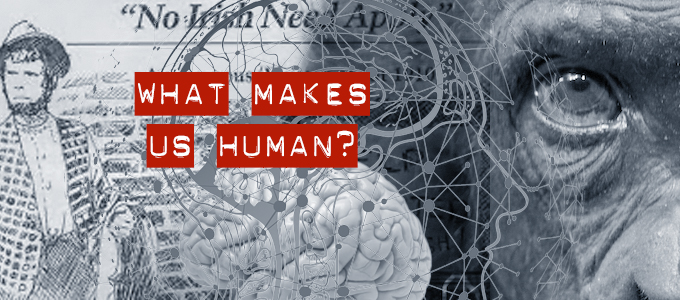 What Makes Us Human?
What Makes Us Human?
Rebecca Tuuri
HON 111 H004 #3249 | MW 1:00 – 2:15
If humans share about 99% of our DNA with chimpanzees, what makes us distinctive as a species? While we may think the idea of the “human species” is clear and bounded, this idea has in fact evolved over time, shaped and reshaped by developments in such fields as biology, anthropology, and history. This course will examine the boundaries of humanness by examining such developments, paying particular attention to how humans have shaped ideas about biology, including concepts of race, gender, and sexuality, to create social boundaries that have empowered some people and restricted others. We will end the fall semester considering whether technology today, especially artificial intelligence, enhances human biology or alters it completely. In the Spring, we will take a macroscopic view to examine the many ways that human societies have created boundaries for social, political, and health reasons and how the breaching of these boundaries has pushed communities to question the meaning of their collective humanity.
Readings include: Yuvan Noel Harari, Sapiens; Richard Grant, Dispatches from Pluto; Goldsby and Bateson, Thinking Race; Adam Waytz, The Power of Human.
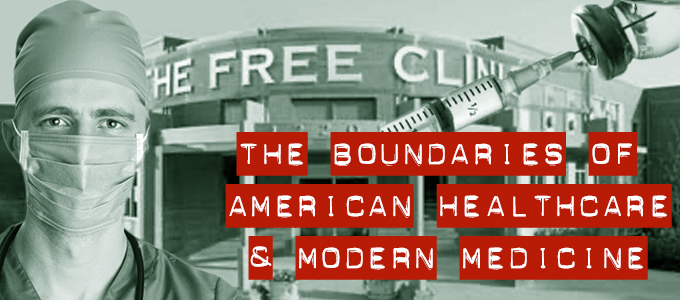 Understanding the Boundaries of American Healthcare & Modern Medicine
Understanding the Boundaries of American Healthcare & Modern Medicine
Katie Anthony
HON 111 H005 #3250 | Tu/Th 2:30-3:45
“America's health care system is neither healthy, caring, nor a system.”
― Walter Cronkite
In recent weeks, the United States has been affected in unprecedented ways by the sweeping COVID-19 virus pandemic. And while trying to battle this global disease, we have learned just how fragile and complex our healthcare system really is. In this course, we will consider two distinct boundaries in the context of health. First, the HON 111 course will take a more focused approach to understanding the boundaries of “life” and “death.” How do people manage difficult medical decisions? How often do people consider and communicate their desires for end of life care? Are physicians equipped to assist people in their darkest moments?
During the HON 112 course, we will focus on the boundary of “health” versus “sickness” as we consider the intersection between health-related inequalities, health policy, poverty, access, community, and culture. Who deserves to be healthy? What are the boundaries between those who are healthy and those who are sick? What are the major barriers we face in becoming a healthy population? How does the role of culture affect people’s understandings of health, wellness, and treatment?
Readings include: Atul Gawande, Being Mortal; Paul Kalananthi, When Breath Becomes Air; Robert Pearl, Mistreated.
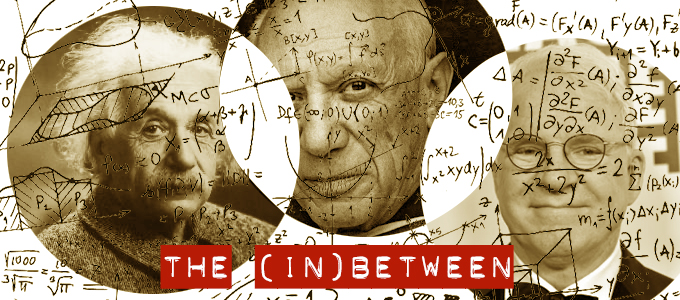 The (In)Between
The (In)Between
Josh Hill
HON 111 H006 #3251 | Tu/Th 2:30-3:45
Imagine a circle drawn on a piece of paper. The penciled edge of the circle seems to represent a strong boundary between what’s inside the circle and what is outside. But does this stark contrast between inside and outside the circle make sense? After all, this type of thinking glosses over the fact that everything within and outside the circle – and the circle itself – are all part of the same page, and in one sense the boundary between the two is an illusion. In this section of Honors Colloquium, “The (In)Between,” the controlling image is this circle on a page. Some ideas are contained solely within the circle, but there is overlap with the page, and it is in this overlap that we often find the most interesting questions and the most compelling answers. The class is broken into 4 sections, each of them adding on to the one before. In the first semester, we will look at science and art and how these come together in surprising ways. We will use texts including The Visual Display of Quantitative Information by Edward Tufte, Art and Physics by Leonard Shlain, and Picasso at the Lapin Agile by Steve Martin. In the second semester, we will continue to add circles to our Venn diagram, examining issues of how culture can affect both science and art in surprising ways through texts like The Cosmopolitan Canopy by Elijah Anderson and It Didn't Start with You by Mark Wolynn, as we attempt to understand our own place within the (In)Between.
Readings include: Edward Tufte, Visual Display of Quantitative Information; Leonard Shlain, Art and Physics; Steve Martin, Picasso at the Lapin Agile and Other Plays.
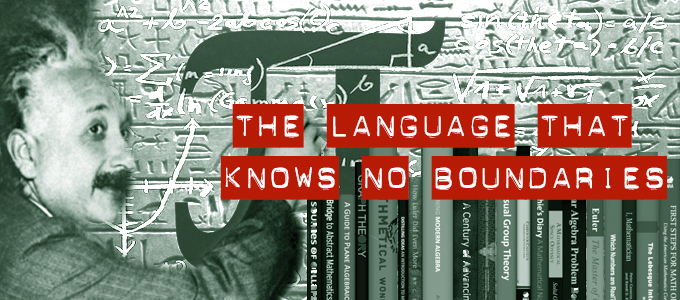 The Language that Knows No Boundaries
The Language that Knows No Boundaries
Anna Wan
HON 111 H007 #3252 | Tu/Th 2:30-3:45
“Mathematics knows no races or geographic boundaries; for mathematics, the cultural world is one country.” -David Hilbert
Math is everywhere in our world—it is a universal language that is spoken in every country and that plays a role in everything around us, from buildings to works of art, from “big data” to check-out lines at the grocery store. Yet, despite its universalism and its presence our everyday life, we often see math as something rarified and highly specialized. There are “math people” and “not math people,” people who are “good at math” and people who are “bad at math.” In short, while math is a language without boundaries, we draw many boundaries around it. This class will explore both the many ways in which math is present in our everyday lives and the limits we place on human flourishing when we place boundaries around it. Ultimately, you will both discover ways of thinking that may be new to you and skills and capacities you did not know you had.
Readings include: Jo Boaler, Limitless Mind: Learn, Lead, and Live Without Barriers; Francis Su, Mathematics for Human Flourishing; Kit Yates, The Math of Life and Death: 7 Mathematical Principles that Shape our Lives; Matt Parker, Humble Pi: A Comedy of Math Errors.
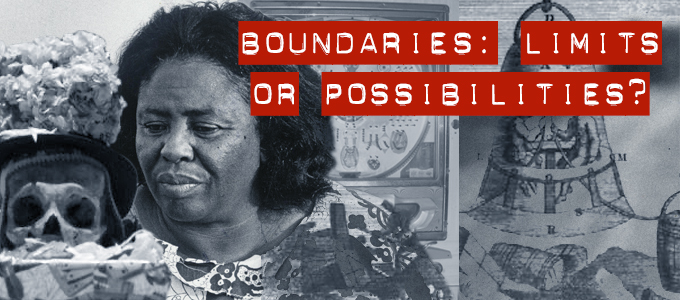 Boundaries - Limits or Possibilities?
Boundaries - Limits or Possibilities?
Iliyan Iliev
HON 111 H008 #3253 | Tu/Th 2:30-3:45
"Once we accept our limits, we go beyond them." - Albert Einstein
We face innumerate boundaries in our lives - personal limits, social constraints, physical and mental barriers, and frontiers that are placed on us by others and by ourselves. These boundaries can be limits, preventing us from going further, making things impossible. But they can also be motivators - to do more, to do better, to exceed. Our minds and bodies can overcome failures and limits and achieve the impossible. We will learn how to use our analytical thinking to overcome some of these limits. In this section of colloquium, we will examine these various aspects of boundaries. In the fall, we will explore failure as a way to break boundaries; the effects of societal failures and limitations, and how they can be overcome; boundaries across generations and whether they tether us through time; whether the physical and mental limits can be separated, and if one can allow us to break free; and even whether death itself is a boundary that can be broken. In the spring we will expand these concepts, and we will discuss how they affect our society and the choices that we can and cannot make. Above all, we will embrace the motto: question everything!
Readings include: Fannie Lou Hamer, The Speeches of Fannie Lou Hamer; Min Jin Lee, Pachinko; Jean-Dominique Bauby; The Diving Bell and the Butterfly; Caitlin Doughty, From Here to Eternity: Traveling the World to Find the Good Death.